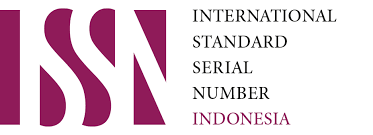REVIEW: AKTIVITAS ANTIKANKER DARI BERBAGAI METABOLIT SEKUNDER YANG DIISOLASI DARI ANGKAK
Abstrak
Angkak merupakan produk fermentasi beras oleh jamur Monascus sp. Beberapa metabolit sekunder yang terkandung di dalamnya diketahui memiliki aktivitas terhadap berbagai kanker. Untuk mengetahui potensi angkak dan metabolitnya sebagai obat alternatif untuk terapi kanker, maka dilakukan literature review terhadap artikel ilmiah tentang angkak dari berbagai jurnal nasional maupun internasional bereputasi. Dari literature review yang dilakukan, dapat diketahui bahwa monaskin, monaskopiridin C dan D, monaskuspiloin, monapuripiridin A, monafilon A dan B, monakolin K, serta beberapa senyawa polisakarida memiliki aktivitas terhadap berbagai sel kanker. Hasil penelitian ini masih memerlukan penelitian lanjutan berupa studi klinis skala besar, uji keamanan, optimalisasi kondisi kultur fermentasi atau penggunaan galur Monascus tertentu dalam proses fermentasi.
Kata kunci: Angkak, Monascus sp., Antikanker
Teks Lengkap:
PDFReferensi
Akihisa T, Tokudab H, Ukiya M, Kiyota A, Yasukawa K, Sakamoto N, Kimura Y, Suzuki T, Takayasu J., and Hoyoku N. 2005. Anti-tumor-initiating effects of monascin, an azaphilonoid pigment from the extract of Monascus pilosus fermented rice (red-mold rice). Chem Biodivers, 2 (10): 1305-1309.
Bray F, Ferlay J, Soerjomataram I, Siegel RL, Torre LA, and Jemal A. 2018. Global cancer statistics 2018: GLOBOCAN estimates of incidence and mortality worldwide for 36 cancers in 185 countries. CA: A Cancer Journal for Clinicians, 68(6): 394-494. doi:10.3322/caac.21492.
Chen RJ, Hung CM, Chen YL, Wu MD, Yuan GF, and Wang YJ. 2012. Monascuspiloin induces apoptosis and autophagic cell death in human prostate cancer cells via the akt and ampk signaling pathways. J Agric Food Chem, 60:7185–7193.
Feng Y, Shao Y, and Chen F. 2012. Monascus pigments. Appl Microbiol Biotechnol, 96:1421–1440.
Hajjaj H, Francois JM, Goma G, and Blanc PJ. 2012. Effect of amino acids on red pigments and citrinin production in Monascus ruber. J Food Sci, 77:M156–M159.
Ho BY, and Pan TM. 2009. The Monascus metabolite monacolin k reduces tumor progression and metastasis of lewis lung carcinoma cells. J Agric Food Chem, 57 (18): 8258-8265.
Ho BY, Wu YM, Hsu YW, Hsu LC, Kuo YH, Chang KJ, Pan TM. 2010. Effects of Monascus-fermented rice extract on malignant cell-associated neovascularization and intravasation determined using the chicken embryo chorioallantoic membrane model. Integr Cancer Ther, 9:204–212.
Holstein SA, Knapp HR, Clamon GH, Murry DJ, and Hohl RJ. 2006. Pharmacodynamic effects of high dose lovastatin in subjects with advanced malignancies. Cancer Chemother Pharmacol, 57:155–164.
Hong MY, Seeram NP, Zhang Y, and Heber D. 2008. Anticancer effects of chinese red yeast versus monacolin K alone on colon cancer cells. J Nutr Biochem, 19(7): 448-458.
Hsu YW, Hsu LC, Liang YH, Kuo YH, and Pan TM. 2010. Monaphilones a-c, three new antiproliferative azaphilone derivatives from Monascus purpureus NTU 568. J Agric Food Chem, 58:8211–8216.
Hsu WH, and Pan TM. 2012. Monascus purpureus-fermented products and oral cancer: a review. Appl Microbiol Biotechnol, 93:1831–1842.
Hsu LC, Hsu YW, Liang YH, Liaw CC, Kuo YH, and Pan TM. 2012. Induction of apoptosis in human breast adenocarcinoma cells MCF-7 by monapurpyridine a, a new azaphilone derivative from Monascus purpureus NTU 568. Molecules, 17:664–673.
Hus M, Grzasko N, Szostek M, Pluta A, Helbig G, Woszczyk D, Cioch MA, Jawniak D, Legiee W, Morawska M, Kozinska J, Waciński P, and Dmoszynska A. 2011. Thalidomide, dexamethasone and lovastatin with autologous stem cell transplantation as a salvage immunomodulatory therapy in patients with relapsed and refractory multiple myeloma. Ann Hematol, 90: 1161–1166.
Jia XQ, Xu ZN, Zhou LP, and Sung CK. 2010. Elimination of the mycotoxin citrinin production in the industrial important strain Monascus purpureus SM001. Metab Eng, 12:1–7.
Knecht A, Cramer B, and Humpf HU. 2006. New Monascus metabolites: structure elucidation and toxicological properties studied with immortalized human kidney epithelial cells. Mol Nutr Food, 50 (3): 314-321.
Lee CL, Hung HK,Wang JJ, and Pan TM. 2007. Improving the ratio of monacolin k to citrinin production of Monascus purpureus NTU 568 under dioscorea medium through the mediation of pH value and ethanol addition. J Agric Food Chem, 55:6493–6502.
Lee BH, Hsu WH, Liao TH, and Pan TM. 2012. Inhibition of leukemia proliferation by a novel polysaccharide identified from Monascus-fermented dioscorea via inducing differentiation. Food Funct, 3:758–764.
Lin YL, Wang TH, Lee MH, and Su NW. 2008. Biologically active components and nutraceuticals in the Monascus-fermented rice: a review. Appl Microbiol Biotechnol, 77:965–973.
Nijjar PS, Burke FM, Bloesch A, and Rader DJ. 2010. Role of dietary supplements in lowering low-density lipoprotein cholesterol: a review. J Clin Lipidol., 4:248-258.
Patakova P. 2013. Monascus secondary metabolites: production and biological activity. J Ind Microbiol Biotechnol, 40:169–181.
Shang XY, Li JJ, Liu MT, Li S, Liu Y, Wang YF, Huang X., and Jin ZL. 2011. Cytotoxic steroids from Monascus purpureus-fermented rice. Steroids, 76: 1185–1189.
Su NW, Lin YL, Lee MH, and Ho CY. 2005. Ankaflavin from Monascus-fermented red rice exhibits selective cytotoxic effect and induces cell death on hep G2 cells. J Agric Food Chem, 53:1949–1954.
Vinayak S, Schwartz EJ, Jensen K, Lipson J, Alli E, McPherson L, Fernandez AM, Sharma VR, Staton A, Mills MA, Schackmann EA, Telli ML, Kardashian A, Ford JM, and Kurian AW. 2013. A clinical trial of lovastatin for modification of biomarkers associated with breast cancer risk. Breast Cancer Res Treat, 142:389–398.
Wang JJ, Lee CL, and Pan TM. 2004. Modified mutation method for screening low citrinin-producing strains of Monascus purpureus on rice culture. J Agric Food Chem, 52:6977–6982.
Yang T, Liu J, Luo F, Lin Q, Rosol TJ, and Deng X. 2014. Anticancer properties of Monascus metabolites. Anticancers drugs, 25(7): 735-744.
DOI: https://doi.org/10.24198/jf.v17i2.21843
DOI (PDF): https://doi.org/10.24198/jf.v17i2.21843.g11615
Refbacks
- Saat ini tidak ada refbacks.
Sitasi manajer:
Jurnal ini diindeks dalam:




Farmaka by Universitas Padjadjaran is licensed under a Creative Commons Attribution-NonCommercial 4.0 International License
Copyright © 2013 Jurnal Farmaka - All Right Reserved

